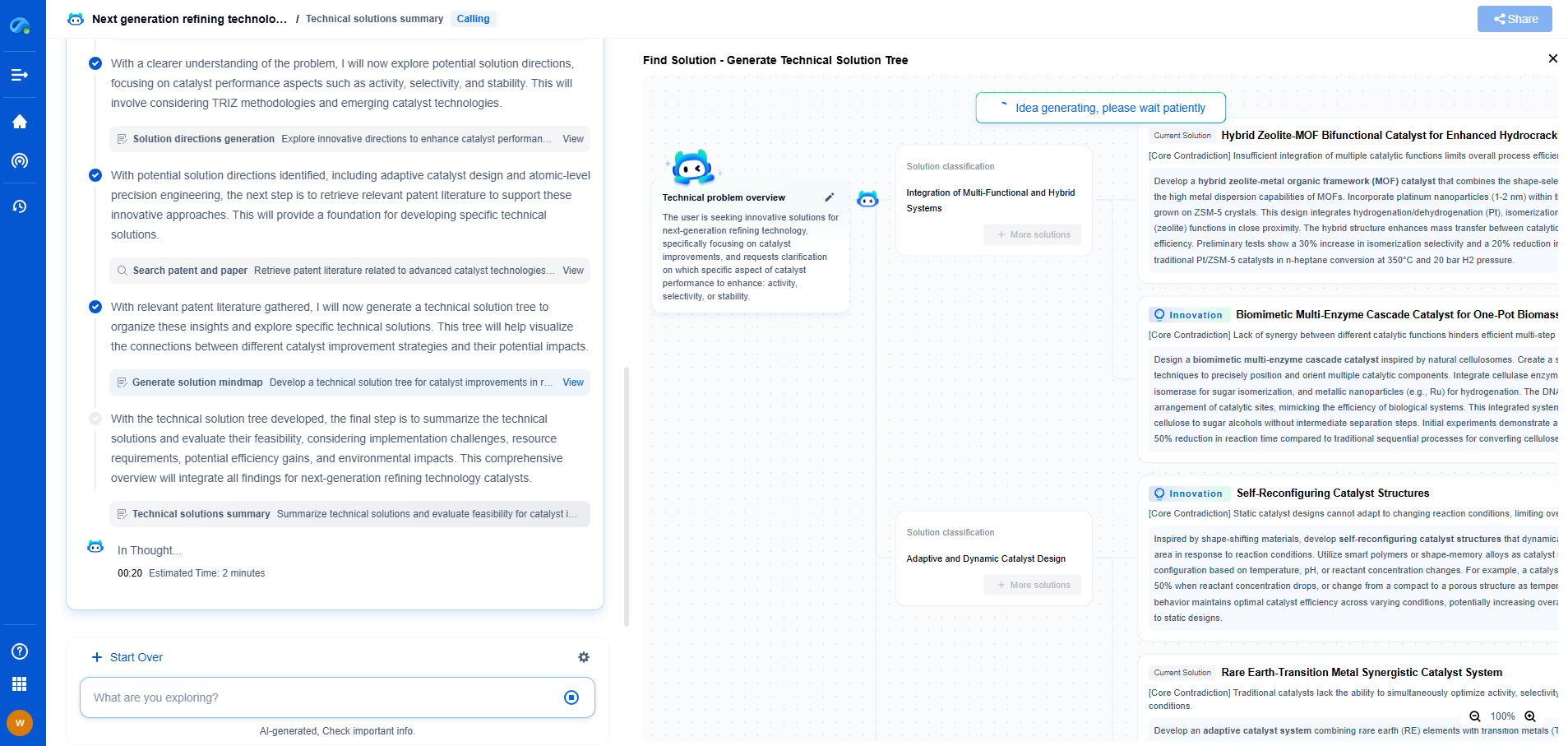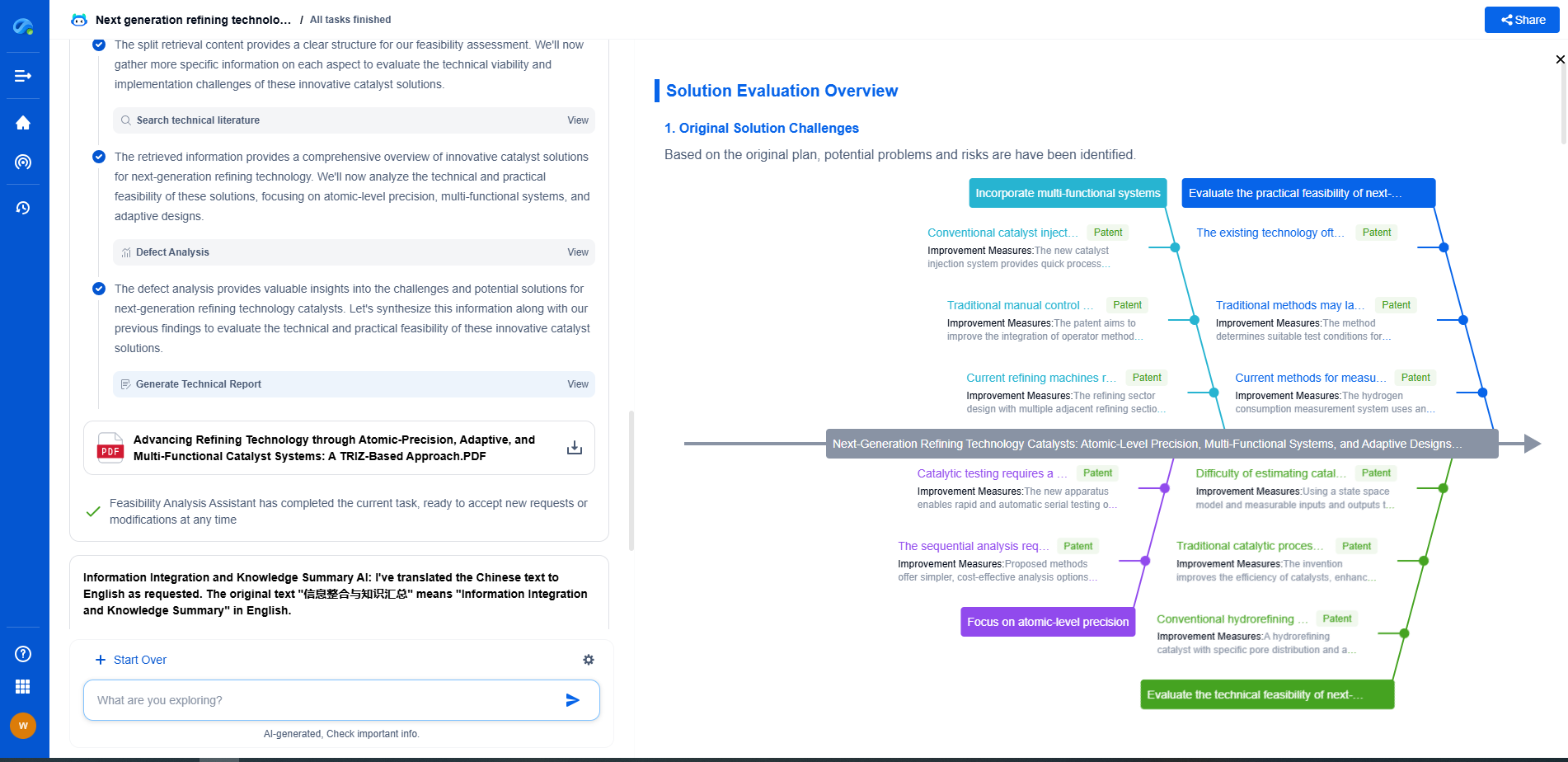ML Models Compared: SVM vs LSTM for Load Forecasting
JUN 26, 2025 |
Understanding Support Vector Machines (SVM)
Support Vector Machines are a type of supervised learning algorithm that can be used for both classification and regression challenges. SVMs are known for their effectiveness in high-dimensional spaces and their ability to find a hyperplane that distinctly classifies data points. When applied to load forecasting, SVM models take historical load data as input and attempt to predict future load values by identifying an optimal hyperplane that minimizes prediction errors.
SVMs have several advantages, including their robustness in handling small to medium-sized datasets and their effectiveness in scenarios where the boundary between data points is not linear. Additionally, the use of kernel functions in SVM allows them to model complex relationships without explicitly increasing the dimensionality of the space. This makes SVMs particularly useful for scenarios where the relationship between variables is non-linear.
However, SVMs also have limitations. They typically require careful tuning of hyperparameters and kernel selection to achieve optimal performance. Furthermore, the computational cost of training SVM models can be high, especially for larger datasets. This can make them less suitable for real-time load forecasting applications where quick predictions are necessary.
Exploring Long Short-Term Memory Networks (LSTM)
Long Short-Term Memory networks are a specialized type of recurrent neural network (RNN) designed to effectively model sequential data. LSTMs are particularly advantageous for load forecasting because they can capture temporal dependencies and long-range patterns in time-series data. This ability to remember and utilize past information makes them highly suitable for predicting future loads, which often depend on historical consumption patterns and seasonal variations.
One of the primary strengths of LSTMs is their architecture, which includes memory cells and gating mechanisms. These components allow LSTMs to selectively retain or forget information, addressing the vanishing gradient problem often associated with traditional RNNs. As a result, LSTMs can maintain a stable learning process over long sequences, making them ideal for handling complex time-series data that exhibit long-term dependencies.
Despite their strengths, LSTMs can be computationally intensive and require large amounts of data for training to prevent overfitting. They also demand significant computational resources for both training and inference, which can be a constraint for their deployment in real-time environments. Additionally, hyperparameter tuning for LSTMs can be challenging, necessitating expertise in neural network design.
Comparing SVM and LSTM for Load Forecasting
When deciding between SVM and LSTM for load forecasting, the choice largely depends on the specific requirements and constraints of the application.
Data Complexity and Volume: For applications with limited data, SVMs may be more manageable due to their ability to work well with smaller datasets. On the other hand, LSTMs are better suited for applications where complex temporal patterns and a larger volume of data are available, as they can leverage these to improve prediction accuracy.
Real-time Requirements: If real-time predictions are essential, SVMs might be a more practical choice due to their typically faster inference times. LSTMs, while powerful, can be slower and more resource-intensive, making them less ideal for scenarios requiring rapid predictions.
Model Interpretability: SVMs generally offer more interpretability compared to LSTMs. The decision boundary in SVMs can provide insights into the relationship between variables, whereas LSTMs, being neural networks, act more like black boxes, providing less transparency into how predictions are made.
Conclusion
Both Support Vector Machines and Long Short-Term Memory networks have their place in load forecasting, each offering distinct advantages. SVMs are effective for simpler, smaller datasets and offer faster inference, making them suitable for quick, interpretable predictions. LSTMs excel in capturing complex temporal dependencies and are preferred for applications with extensive historical data and where understanding long-term patterns is critical.
Ultimately, the choice between SVM and LSTM should be guided by the specific needs of the load forecasting task, taking into account factors such as data volume, real-time prediction requirements, and the desired level of model interpretability. By understanding these models' strengths and limitations, practitioners can better tailor their approaches to optimize load forecasting performance.
Stay Ahead in Power Systems Innovation
From intelligent microgrids and energy storage integration to dynamic load balancing and DC-DC converter optimization, the power supply systems domain is rapidly evolving to meet the demands of electrification, decarbonization, and energy resilience.
In such a high-stakes environment, how can your R&D and patent strategy keep up?
Patsnap Eureka, our intelligent AI assistant built for R&D professionals in high-tech sectors, empowers you with real-time expert-level analysis, technology roadmap exploration, and strategic mapping of core patents—all within a seamless, user-friendly interface.
👉 Experience how Patsnap Eureka can supercharge your workflow in power systems R&D and IP analysis. Request a live demo or start your trial today.
- R&D
- Intellectual Property
- Life Sciences
- Materials
- Tech Scout
- Unparalleled Data Quality
- Higher Quality Content
- 60% Fewer Hallucinations
Browse by: Latest US Patents, China's latest patents, Technical Efficacy Thesaurus, Application Domain, Technology Topic, Popular Technical Reports.
© 2025 PatSnap. All rights reserved.Legal|Privacy policy|Modern Slavery Act Transparency Statement|Sitemap|About US| Contact US: help@patsnap.com

